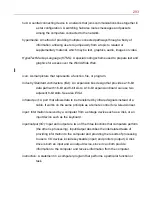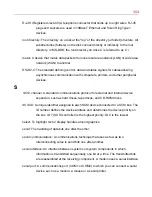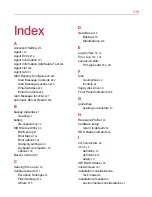
305
server: A computer or program that provides information or shared resources in
response to external requests. For example, a file server stores on its hard
disks the programs and data files for all the workstations in a local area
network (LAN).
session: The time during which a program is running. For example, an MS-DOS session
under Windows is the time during which you execute MS-DOS commands or
run an MS-DOS program.
shortcut: 1) A feature of Windows 95/98 and Windows NT that allows you to use an icon
to open folders and documents and their associated programs, to start
programs directly or to move from folder to folder. 2) A keyboard shortcut.
SIMM: Single In-line Memory Module. A unit of RAM used for memory expansion.
Small Computer Systems Interface (SCSI): A standard interface providing an expansion
bus for connecting devices such as disk drives to a computer. You can connect
up to seven SCSI devices to a single SCSI port.
software: The computer programs or instructions that tell the hardware what tasks to
perform. The general classes of software are operating systems, applications
and utilities.
Stand by: A feature in Windows 98 that, like Windows 95’s Suspend command or
Toshiba’s Resume Mode, allows you to turn off the computer without exiting
your applications and to continue from where you left off when you turn on the
computer again.
stop bit: In asynchronous serial communications, one or more bits indicating the end of a
block of characters.
synchronous: Having a constant time interval between successive bits, characters or
events. Synchronous data transmission requires both the sending and
receiving devices to use special synchronizing characters to correct variations
in timing between the devices. See also asynchronous.
Summary of Contents for 3200
Page 1: ... ...
Page 309: ...309 ...








































